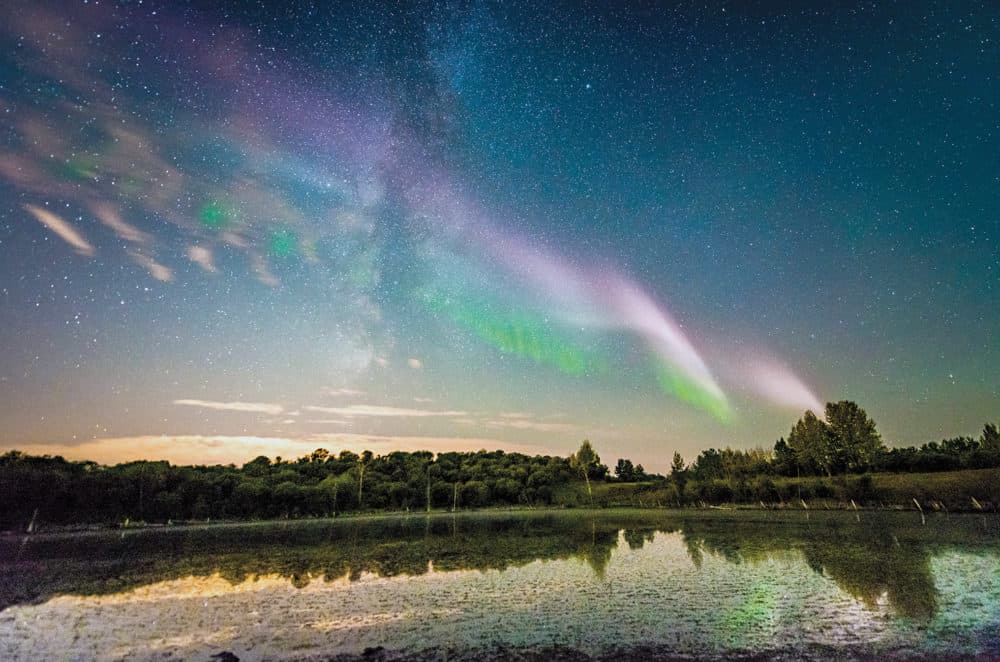
Filmmakers behind a new documentary on the Northern Lights are encouraging Northerners to contribute photos and observations on the phenomenon to a growing body of citizen-generated data.
Northerners see the northern lights almost every clear night of the winter, but how much about them do we really know?
Chris Ratzlaff, a citizen scientist who co-stars in an upcoming episode of The Nature of Things that will focus on the northern lights, said his progression from being interested in the lights to becoming obsessed with them occurred as he learned more about the phenomenon.
"You can walk outside on any given dark evening and, as long as the sky is clear, you have a pretty good chance of seeing the northern lights," said Ratzlaff.
In Calgary, Ratzlaff said he only sees the lights once or twice a month.
Aurora borealis occurs when solar wind disturbs the EarthSA����Ӱ�Ӵ�ý�s magnetosphere. Our planetSA����Ӱ�Ӵ�ý�s magnetic fields draw the wind to the EarthSA����Ӱ�Ӵ�ý�s magnetic poles, which is why they are abundant in starry Northern skies.
To progress from catching them at random to being able to plan your sightings, Ratzlaff found there are mobile apps that can tell you whether the lights are out.
But to be able to predict the lights, he started looking at solar wind data. American federal agencies NASA and the National Oceanic and Atmospheric Administration (NOAA) make that data available online for free.
From there, one can look at the speed of the solar wind and its magnetic orientation to get a better idea of when the show will start to kick up.
To figure out how intense the lights will be, watch for solar flaresSA����Ӱ�Ӵ�ý�massive emissions of energy and explosions of plasmaSA����Ӱ�Ӵ�ý�from the sun, as well as coronal holes, which are dark spots signifying that a bunch of solar particles have been expelled.
"Those give us about a three-day heads up," said Ranson.
Ratzlaff is part of the Alberta Aurora Chasers, a Facebook community where people post pics and observations on the lights. He said the group has members from all over the NWT and around the world.
Citizen observations are helping further the data used by scientists to research the lights. Yellow and green colours are produced when solar particles interact with oxygen. Red, violet and blue are produced when they hit nitrogen. By observing aurora phenomenon on other planets, scientists can discern some of their atmospheric makeups.


